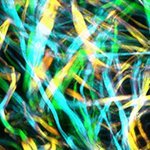
Chew Chai
@chewmchai
PhD student in Bo Wang Lab @PhysPlanaria
ID: 712505067111211008
23-03-2016 05:03:40
9 Tweet
72 Followers
236 Following




Excited to share our latest work in microscope development from Prakash Lab, with Deepak Krishnamurthy, Ethan Li, Pranav Vyas, Nibha Akireddy, Chew Chai and PrakashLab: biorxiv.org/content/10.110…. (1/n)




